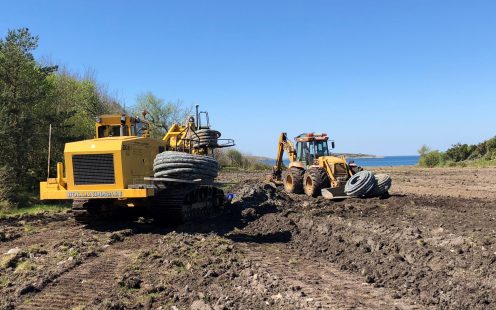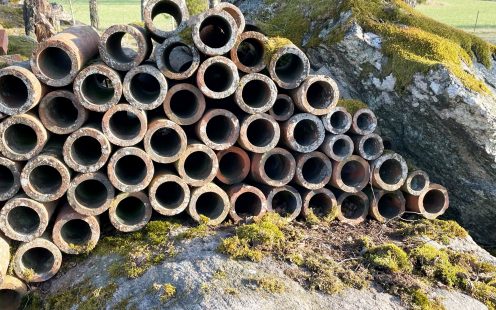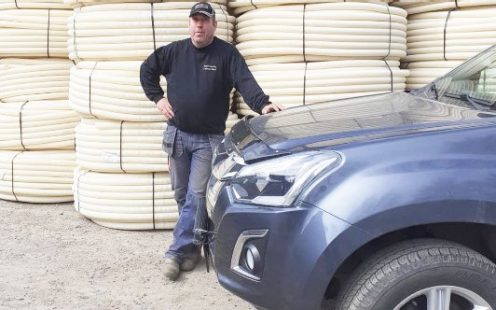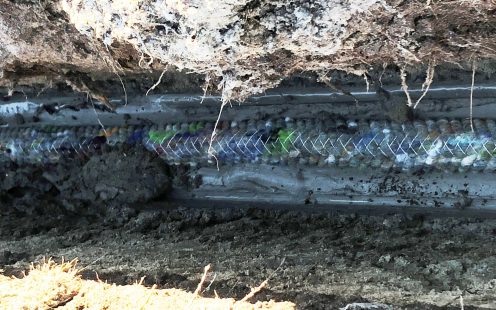Agricultural Drainage in Sweden: The Past, the Present and the Future
In Sweden, farmers and gardeners often say that, in order to thrive, crops need 50% soil, 25% air and 25% water. Despite its northern location, the country boasts a surprisingly rich agricultural history, dating back to the Bronze Age. For hundreds of years, local communities have been working to achieve the optimal growth conditions for their crops, and drainage systems have played a significant role in their success.
.jpg)
Centuries-Long Agricultural Traditions
Nowadays, Sweden’s cultivated lands stretch over 2.7 million hectares, corresponding to approximately 6.5% of the country’s total land area. While there are areas with well-drained soils, most plots require draining to ensure proper growth conditions for crops.
Intensive draining took place especially during the late 19th and early 20th centuries, allowing farmers to obtain excellent arable lands that previously were too wet to cultivate. During that period, significant subsidies were paid by the state, covering the investment for farmers and facilitating the development of agriculture.
.jpg)
Passion for Agriculture That Runs in the Blood
In Sweden, the Nordic climate puts an additional challenge on growing crops; however, local communities know how to work their lands.
Per Martinsson is a well-known agribusiness entrepreneur Skåne, southern Sweden. Learning from his father, he started working with agricultural drainage systems when he was only 10 years old, and now is a widely respected professional with industry experience of more than 40 years.
Per took over the leadership of his father’s company in 2005, having accumulated a wealth of knowledge when it comes to drainage pipes, soil types and installation methods. Therefore, he is acutely aware of the current state of the drainage systems in the region. Most were built during the 1940s and 50s and no longer function properly. Some are about to collapse. It is no surprise that Per’s services are constantly in demand.
“There have been far too few pipes laid for a long time, and right now it is weighing on the farmers' profitability,” Martinsson explains.
Why Is Field Drainage so Important?
Well-planned and correctly constructed drainage systems offer several benefits when it comes to securing rich harvests.
Drainage extends the growing season, as sowing can start earlier on well-drained soil. Autumn-sown crops, such as winter wheat, germinate faster and adapt better to the dormancy period.
Furthermore, greater air volume in the soil ensures better root development, resulting in more efficient uptake of nutrients and higher resistance to droughts. It is easy to see how something as simple as a drainage pipe system can provide plants with the right balance of soil, air and water.
According to the Swedish Board of Agriculture, about 4,000 to 4,500 hectares of arable land in the country are equipped with drainage systems every year. However, the Board's estimates show that the total area that would need drainage reaches 15,000 hectares per year.
.jpg)
.jpg)
Meeting the Needs of Local Farmers
Nowadays, Swedish farmers are forced to reevaluate how to optimize soil conditions in their fields and obtain higher yields, as the prices of agricultural land in the country are on the rise. At the same time, each investment must be weighed carefully, because current funding opportunities from the government or the EU for field drainage are limited.
For several years now, Per has been working exclusively with drainage products and systems from Pipelife and states that Pipelife Standard drainage pipes have become a best-selling solution among farmers in the region he serves.
Offering a reliable and cost-efficient solution for various types of water-permeable soils, Pipelife Standard drainage system consists of PVC pipe with a strength of 90 g/m2 wrapped in 0.2 mm geotextile. Pipelife also offers various specialized drainage types designed for demanding soils, such as silty clay soils that can clog other systems. Furthermore, all Pipelife's drainage systems come with a wide range of fittings and wells; thus, they can be easily tailored to the exact needs of each client.
"I use Pipelife because the company offers first-class products and a high level of customer service. Everything just rolls on and works — exactly the way you want it to be!" Per Martinsson concludes.
Discover our agricultural solutions
Get in Touch
Please choose your preferred way to get in contact with us. We will get back to you as soon as possible.
Fill our form